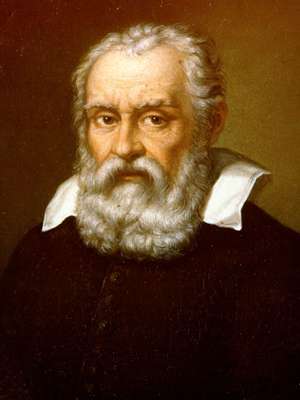Falling Bodies

What it's about:
It is often said that Galileo demonstrated how two bodies, no matter their mass, fall with equal speed by dropping to stones of different sizes from the tower of Pisa. Although the veracity of this story is questionable, it demonstrates Galileo’s commitment to experimentation as way to obtain proofs.
He argued as follows: If the way an object falls depends on its weight, what happens if we take a two pound rock, split it in half and join the halves by a light string? Then one the one hand this contraption should fall as fast as a two pound rock, but on the other hand it should fall as fast as a one-pound rock"
The law:
-
X=a•t2The distance covered by a falling object is equal to the product of the acceleration constant and the square of the time (independant of mass).
Galileo Galilei

Born on February 15, 1564, in Pisa, Galileo first studied medecine before becoming fascinated by mathematics, and astronomy. While holding various teaching jobs, he started experimenting with motion and gravity.
He became very critic of the Aristotelian view of the world, which isolated him form the intellectual community.
His various publications, and support of a sun-centered solar system, made the church a stiff opponent, and accuse him of heresy twice. Galileo died in Arcetri, near Florence, Italy, on January 8, 1642, and by this time, the Church could not deny science any more.
Where?
Discovery Description:
On the basis of the law of parabolic fall, Galileo reached the conclusion that bodies fall on the surface of the earth at a constant acceleration (same speed whatever the weight), and that the force of gravity which causes all bodies to move downward is a constant force.
Video:
Andréane Valot - Le Plomb ou la Plume?

